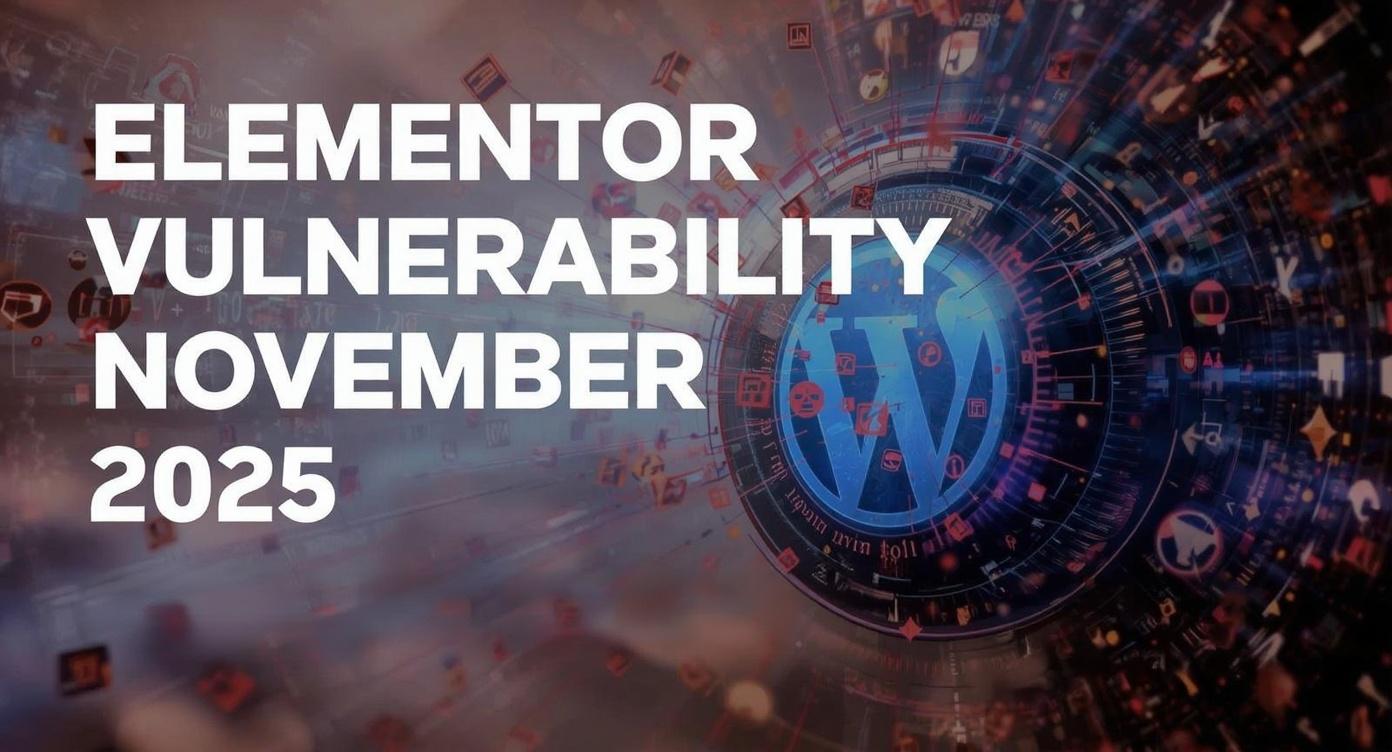In November 2025, the WordPress community faced another wave of critical security alerts related to Elementor and its third-party add-ons. With over 13 million active installations, Elementor remains one of the most popular page builders in the world – but its ecosystem of extensions continues to expose websites to serious vulnerabilities. This article explores the latest Elementor-related vulnerabilities reported in November 2025, their potential impact, and the best practices to secure your WordPress site.
Understanding the Scope of the Elementor Ecosystem
Elementor’s popularity has led to a thriving marketplace of third-party add-ons offering advanced widgets, templates, and design tools. However, this expansion also increases the attack surface for malicious actors. Many of these add-ons are developed by small teams or independent developers, which can lead to inconsistent security practices and delayed patching.
- According to data from Patchstack, over 60% of reported Elementor-related vulnerabilities in 2025 originated from third-party extensions rather than Elementor’s core plugin.
- Most of these flaws fall into three categories:
- Cross-Site Scripting (XSS)
- Remote Code Execution (RCE)
- Privilege Escalation and Unauthorized Access
The November 2025 Elementor Vulnerability Landscape
King Addons for Elementor – Critical File Upload and Privilege Escalation (CVE-2025-6327, CVE-2025-6325)
In early November 2025, cybersecurity researchers uncovered two zero-day vulnerabilities in King Addons for Elementor, a plugin installed on over 10,000 websites.
- CVE-2025-6327 (CVSS 10.0): Allowed unauthenticated users to upload arbitrary files to the server, leading to potential remote code execution.
- CVE-2025-6325 (CVSS 9.8): A privilege escalation flaw in the registration endpoint that could grant administrative privileges to attackers.
According to TechRadar’s report, both vulnerabilities were patched in version 51.1.37, and users were urged to update immediately.
Impact: Full site takeover risk, data theft, and potential injection of malicious scripts or backdoors.
Startklar Elementor Addons – Path Traversal Vulnerability (CVE-2024-5153)
Another serious issue was identified in Startklar Elementor Addons, a plugin with over 20,000 active installations. The path traversal vulnerability (CVE-2024-5153) allowed unauthenticated attackers to access or delete arbitrary files, including critical WordPress directories such as /wp-config.php. SentinelOne’s vulnerability database classified this flaw as high severity, warning that exploitation could lead to complete site compromise.
Impact: Unauthorized file access, potential for data loss, and permanent site damage.
RomethemeKit for Elementor – Remote Code Execution (CVE-2025-30911)
Between March and May 2025, a critical RCE vulnerability (CVE-2025-30911) was discovered in RomethemeKit for Elementor, allowing even subscriber-level users to execute arbitrary code on the server. The issue was resolved in version 1.5.5, but unpatched sites remained vulnerable for months. Infosecurity Magazine reported that this flaw could be exploited to install malware, create rogue admin accounts, or deploy crypto-mining scripts.
Impact: Full server compromise and persistent unauthorized access.
Responsive Addons for Elementor – Stored Cross-Site Scripting (CVE-2025-2225)
A stored XSS vulnerability in Responsive Addons for Elementor affected versions up to 1.6.9, as documented by the National Vulnerability Database (NVD).
Impact: Credential theft, session hijacking, and defacement of website content.
Team Members for Elementor Page Builder – Stored XSS (CVE-2025-31771)
Another XSS flaw (CVE-2025-31771) was found in Team Members for Elementor, affecting versions through 1.0.4. Exploitation required contributor-level access; patched in later releases. The vulnerability is listed in the Wiz.io vulnerability database.
Disable Elementor Editor Translation plugin – Missing Authorization Check (CVE-2025-22671)
In March 2025, the Disable Elementor Editor Translation plugin was found to have a missing authorization vulnerability (CVE-2025-22671). This flaw allowed unauthorized access to restricted functionality. Recorded Future’s vulnerability database rated it as medium severity (CVSS 4.3), but exploitation could still disrupt site operations if combined with other vulnerabilities.
Wasim Pro Addons for Elementor – Stored XSS (CVE-2024-51812)
Although discovered in late 2024, the Wasim Pro Addons XSS vulnerability (CVE-2024-51812) remained relevant through 2025, as many sites had not yet updated. The flaw affected versions through 1.5.0 and was patched in 1.6.0. The vulnerability is documented in the Wiz.io vulnerability database.
Trends and Insights: What These Vulnerabilities Reveal
- Third-Party Add-ons as the Weakest Link
- Rapid Exploitation and Botnet Integration
- Patch Delays and Low Awareness
- Growing Use of Virtual Patching
How to Protect Your Elementor-Powered Website
- Keep Plugins Updated
- Enable automatic updates for Elementor and its add-ons.
- Regularly check the WordPress vulnerability database for new advisories.
- Audit Installed Add-ons
- Remove unused or abandoned plugins.
- Only install extensions from reputable developers with recent update histories.
- Implement Security Hardening
- Use a Web Application Firewall (WAF) to block malicious requests.
- Limit file upload permissions and disable PHP execution in upload directories.
- Enforce least privilege principles for user roles.
- Monitor for Suspicious Activity
- Use security plugins like Wordfence or Sucuri to detect anomalies.
- Set up alerts for unauthorized admin logins or file changes.
- Backup Regularly
- Maintain daily offsite backups to ensure rapid recovery in case of compromise.
The Bigger Picture: Elementor Security in 2025 and Beyond
The Elementor vulnerability surge in 2025 underscores a broader issue in the WordPress ecosystem – plugin sprawl and fragmented security practices. As the platform matures, users must balance flexibility with responsibility. Security should be treated as a continuous process, not a one-time setup.
The Elementor team continues to strengthen its core plugin security, but the open nature of the WordPress ecosystem means that vigilance is essential. Developers and site owners alike must stay informed, apply patches promptly, and adopt layered defenses.
Conclusion
The November 2025 Elementor vulnerabilities serve as a stark reminder of how quickly security threats evolve in the WordPress landscape. From file upload flaws to privilege escalation and XSS attacks, the risks are real – but manageable with the right approach.
By staying updated, auditing your plugins, and using proactive protection tools, you can safeguard your Elementor-powered website from the latest exploits.
For more insights on WordPress security, visit Developress.io and explore our in-depth guides on plugin management, vulnerability prevention, and performance optimization.







